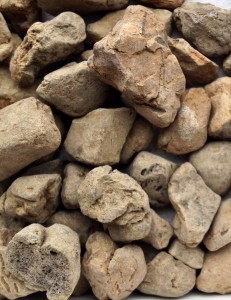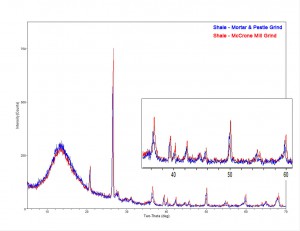XRD sample holders are easily the most common items we’re asked to machine. Sometimes it’s because they’re no longer available, but usually, it’s to accommodate some special application. Sometimes it’s as simple as making them from Aluminum to allow for cleaning with acetone or other harsh solvents. Other times it has more to do with the clients preferred style of loading or sample volume. The end result is that there’s very little consistency so our process needs to be as versatile as possible. This video highlights the most recent process. It’s hard to see exactly what’s going on through the coolant, but this is a test run of a program to cut special holders for 25mm filter membrane holders for respirable silica measurements (or anything else one might want to deposit onto a 25mm filter). It’s cutting the bottom of one holder and the top of another (each on its own side of the fixture). A full load of these produces 6 complete holders for every run.


